How do I use Vinchin with Wasabi?
Vinchin Backup & Recovery has been validated to work with Wasabi. Enterprise and SMB customers can get next-gen data protection from the software, and it can now archive backups to Wasabi's cloud storage.
1. Prerequisites:
Active Wasabi cloud storage account
Vinchin Backup & Recovery v6.5 and above versions
Vinchin Backup & Recovery Enterprise Edition deployed and licensed
2. Architecture Diagram
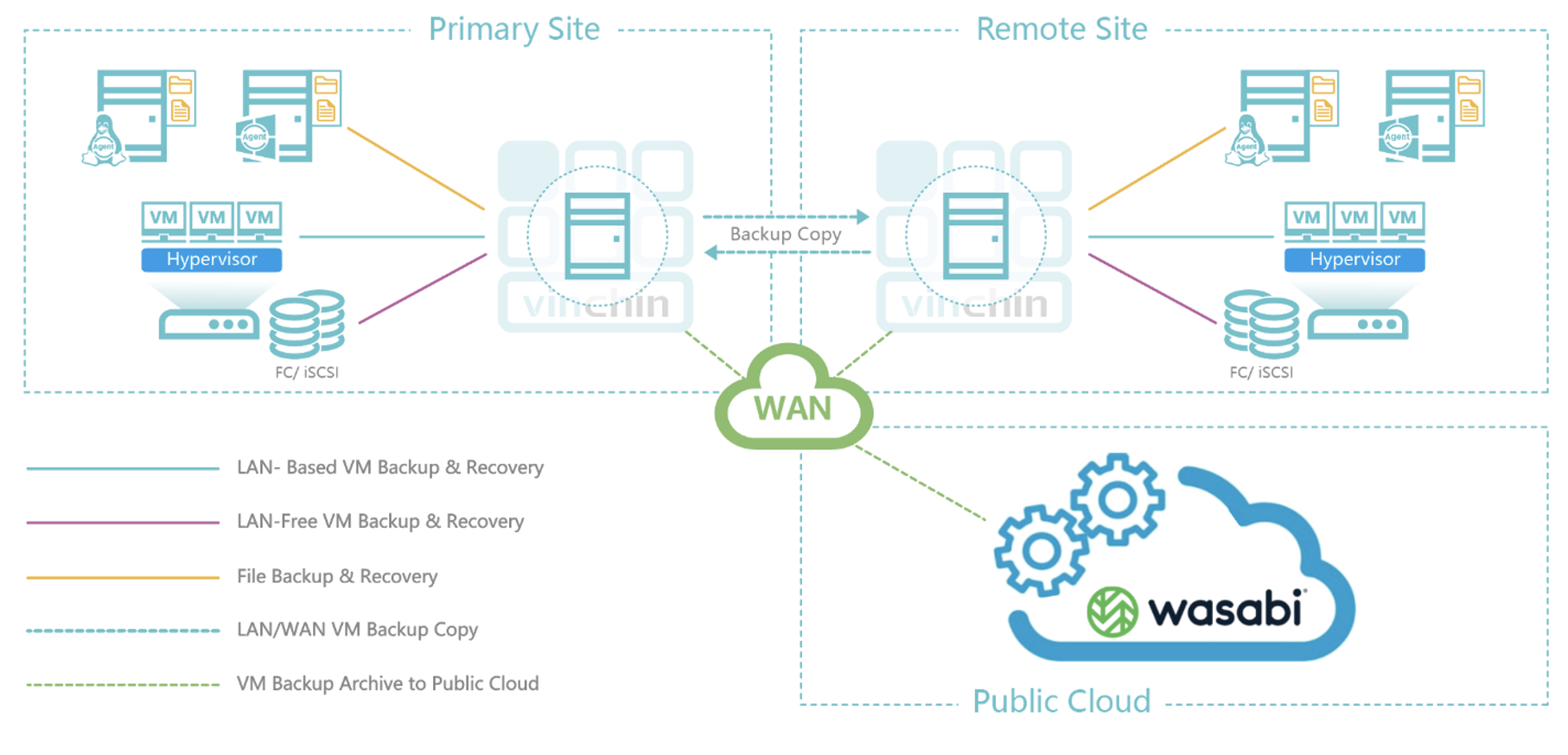
3.Configure Wasabi as Archive Storage
3.1 Log in Vinchin backup server web console.
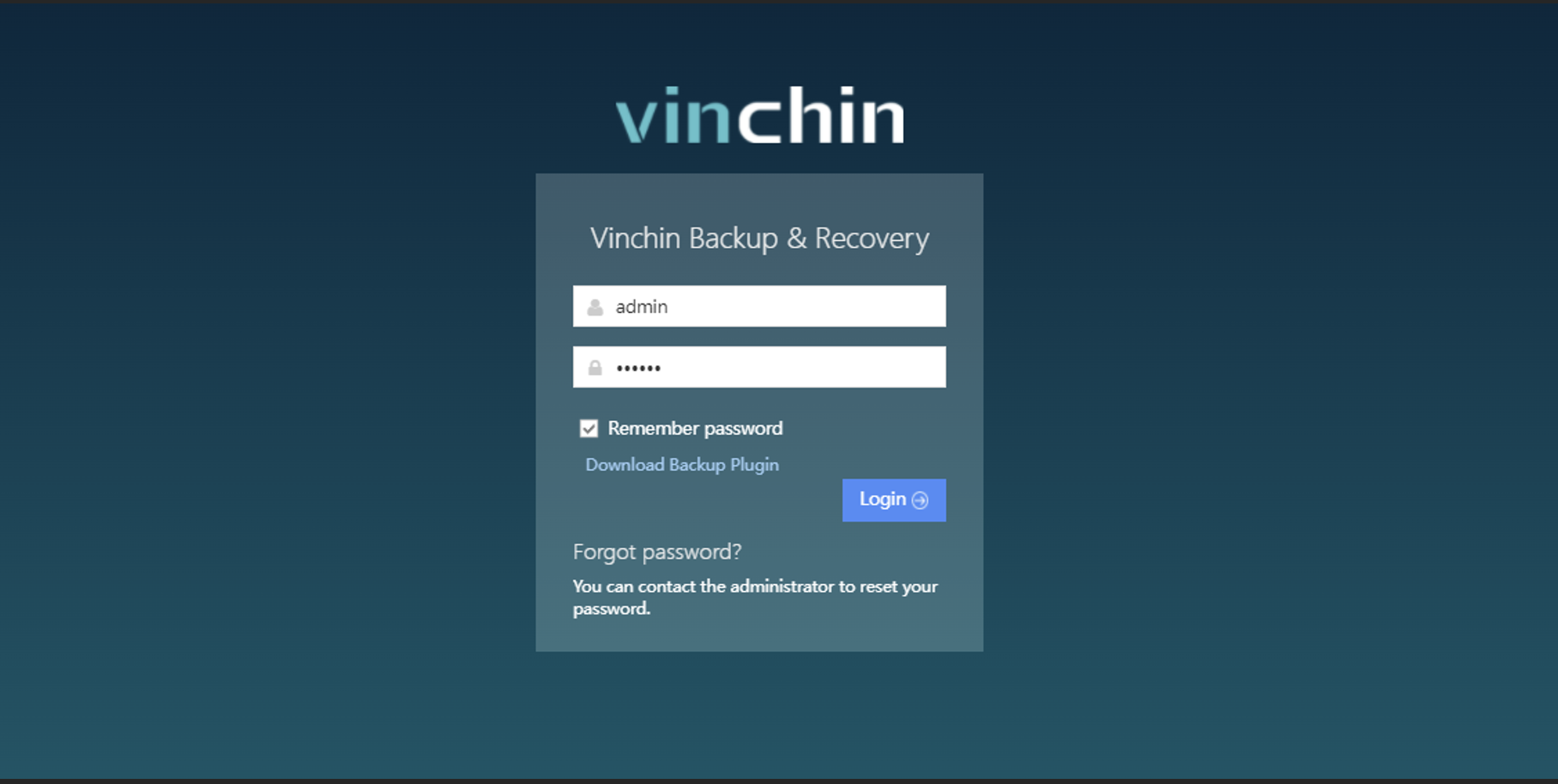
3.2 Navigate to “Resources” >> “Storage”. Click “Add”.
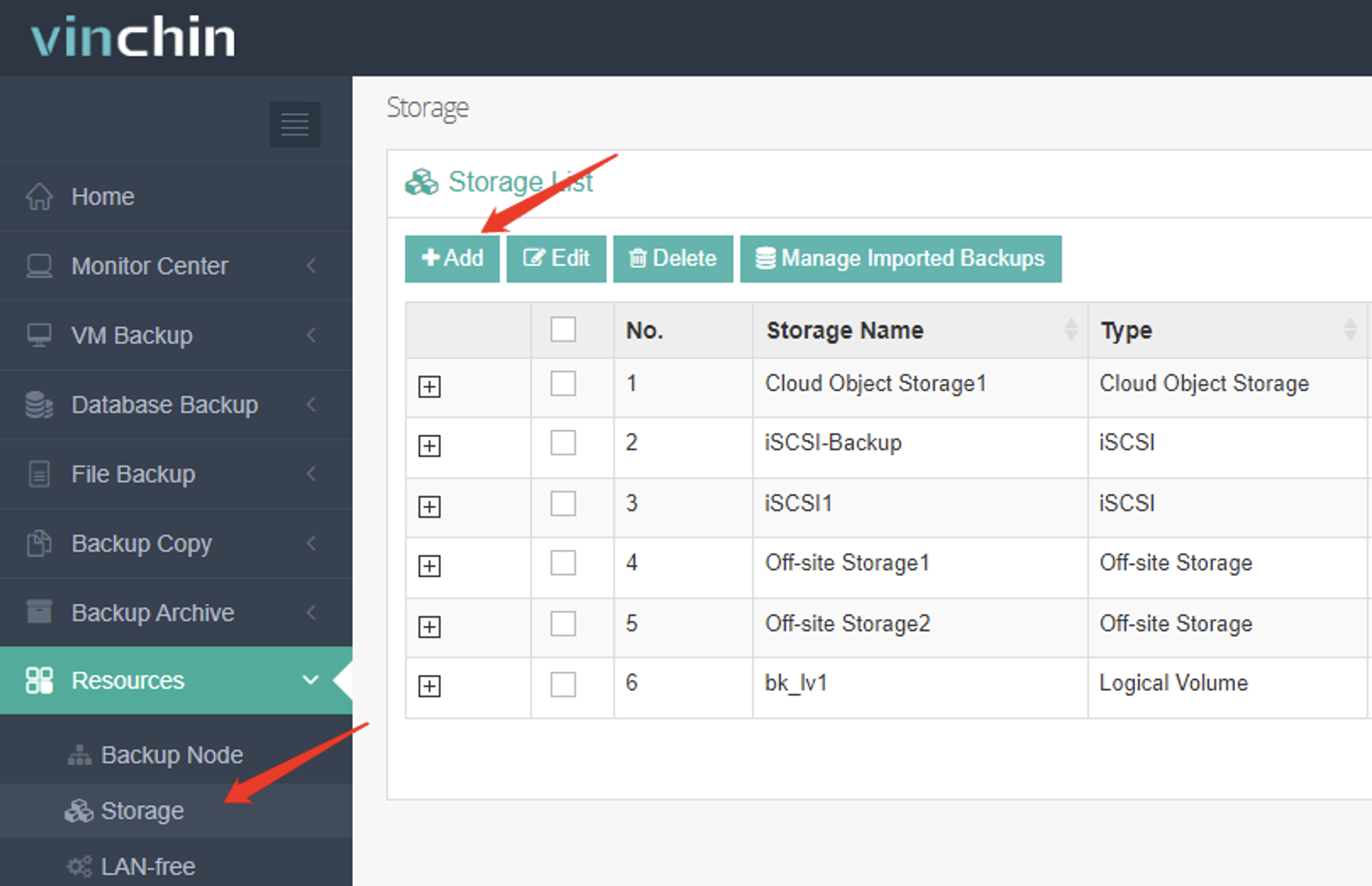
3.3 Choose “Cloud Object Storage” from the Storage Type drop down list.
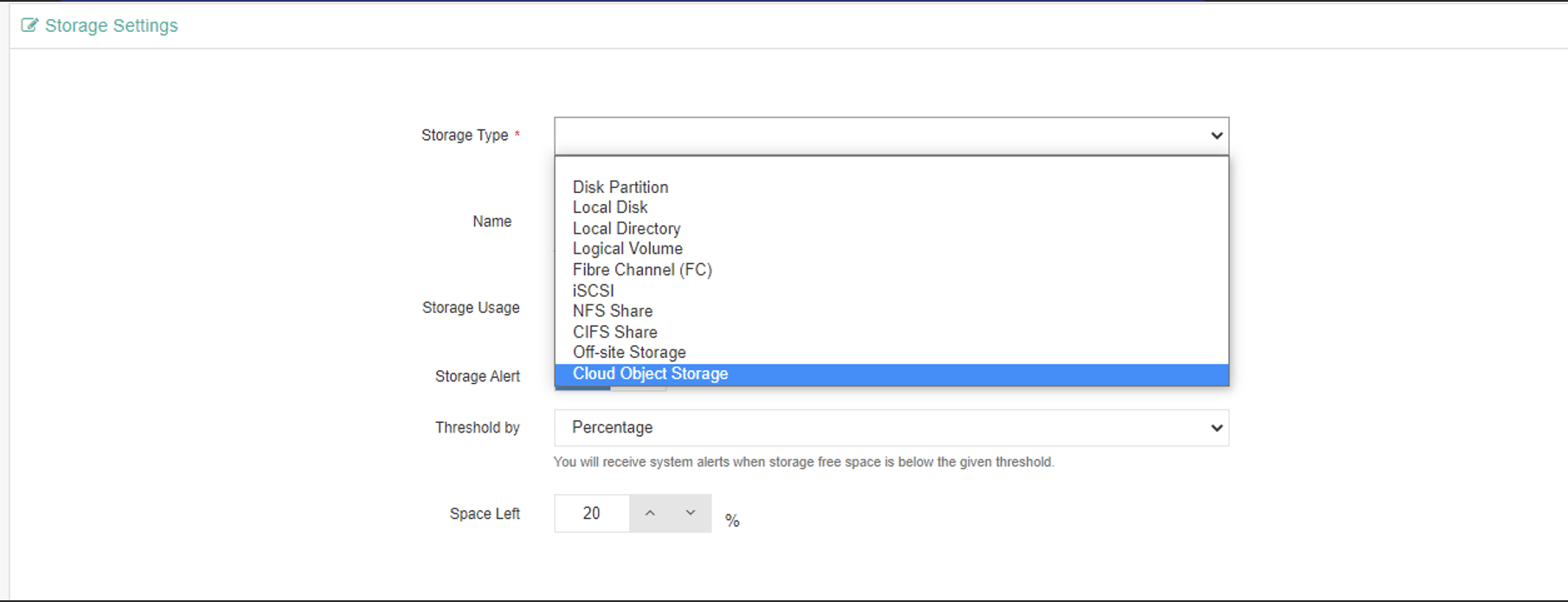
3.4 Choose “Wasabi” from the Vendor drop down list.

3.5 Choose a location of the storage data center from the “Region” drop down list, or manually enter an IP address.

Note: This configuration example discusses the use of Wasabi's us-east-1 storage region. To use other Wasabi storage regions, please use the appropriate Wasabi service URL as described in our Wasabi Service URLs article.
3.6 Provide the following:
Access Key- Provide the S3 Access Key. Refer to creating a sub-user and access and secret keys.
Secret Key-Provide the S3 Secret Key. Refer to creating a sub-user and access and secret keys.
Bucket- Provide the name of the Wasabi bucket to be used.
Folder- Provide the name of the folder to store the archive data
Name- Provide the name for the storage.
Quota- Maximum space usage allowed for cloud archive.
The "Storage Usage" field has been set by default to "Archive" since cloud storage can now only be used as archive destination.
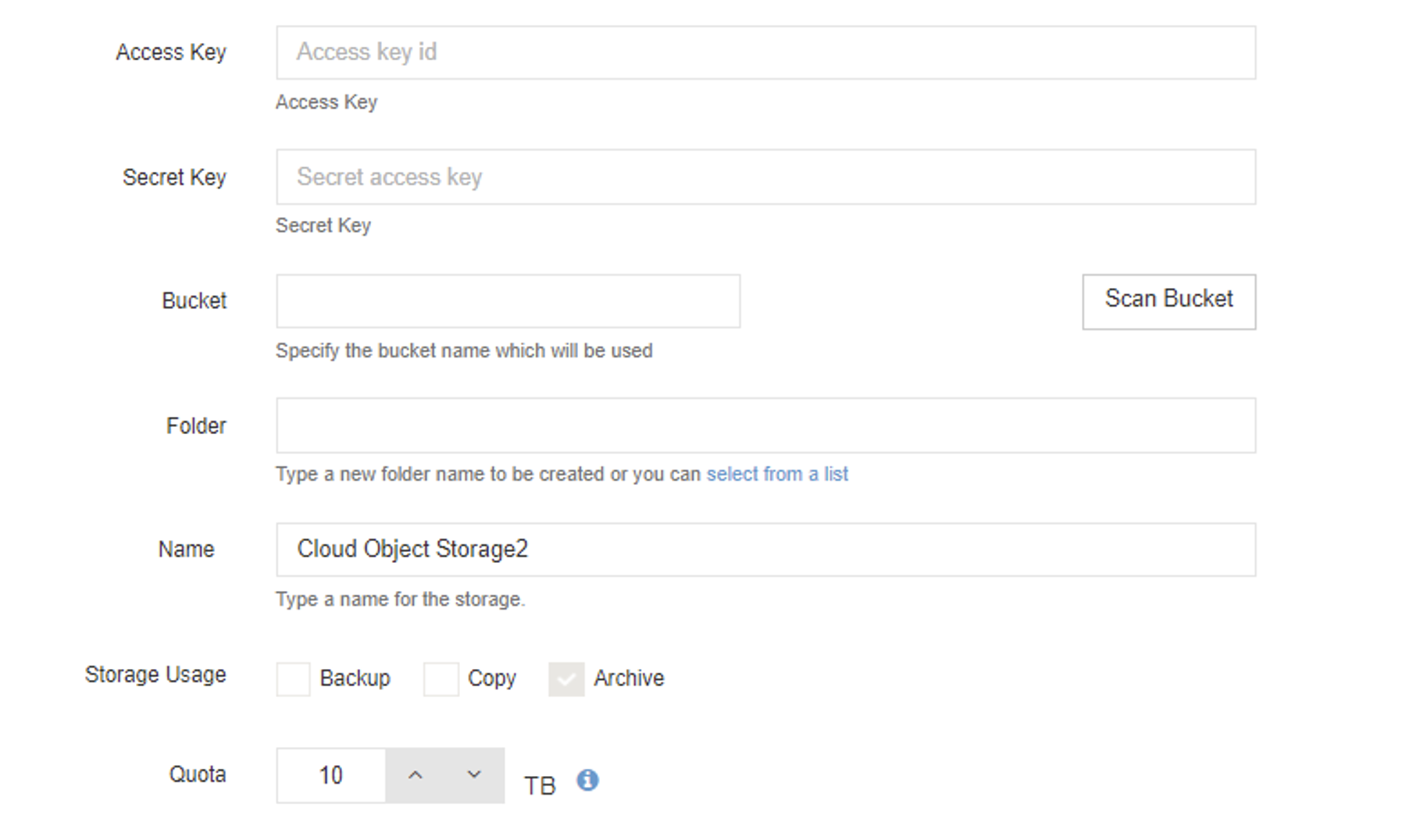
3.7 Click “OK” to save the settings.
Once you add the Wasabi hot cloud storage into Vinchin backup infrastructure successfully, you’ll be redirected to “Storage” page again, and the added cloud storage can be seen on the list.
4. Create a Backup Archive job
4.1 Navigate to “Backup Archive” >> “Archive”.
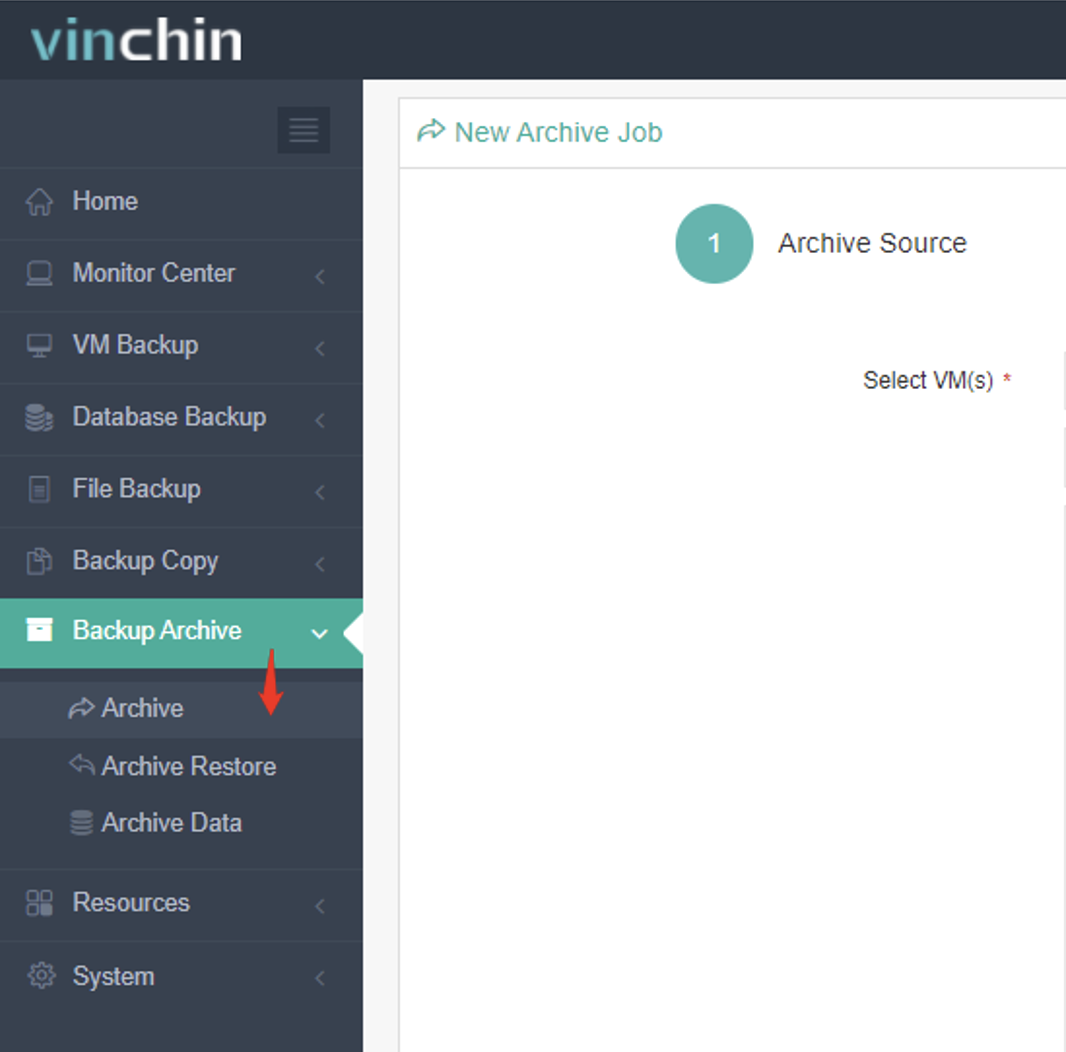
4.2 Choose an archive source from the available Restore point list. Click “Next”. Each Restore reflects a successful backup either a full or incremental.
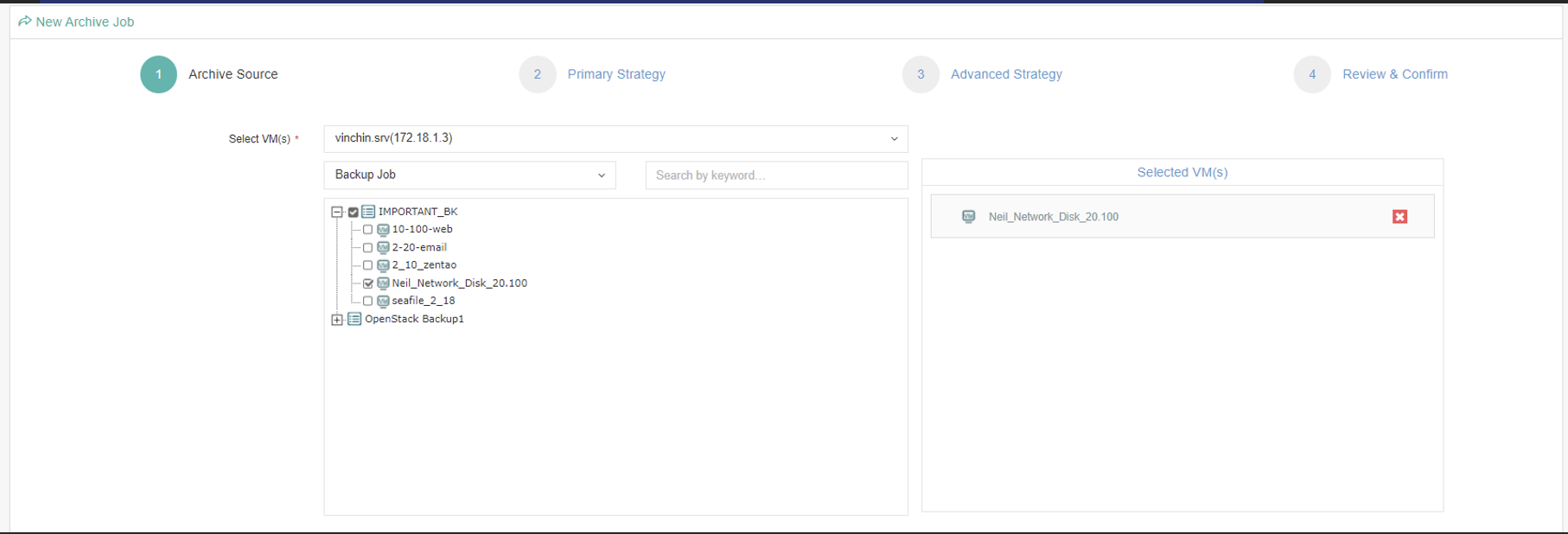
4.3 Setup archive mode to be once-off or as scheduled.
Select "Once-off Archive" to run the job once. Define a start time from the calendar.

Select "Archive as Scheduled" to schedule the archive job to automatically run on a daily, weekly, or monthly schedule.

Click "Next".
4.4 Choose "Cloud Object Storage" from Destination drop down list, and select the target Wasabi hot cloud storage from the Cloud Object Storage drop down list.

4.5 Settings for Encrypted Transmission (ensure data security during data transfer), Retention Policy, and Speed Controller (optional) can be customized by clicking on the corresponding section.
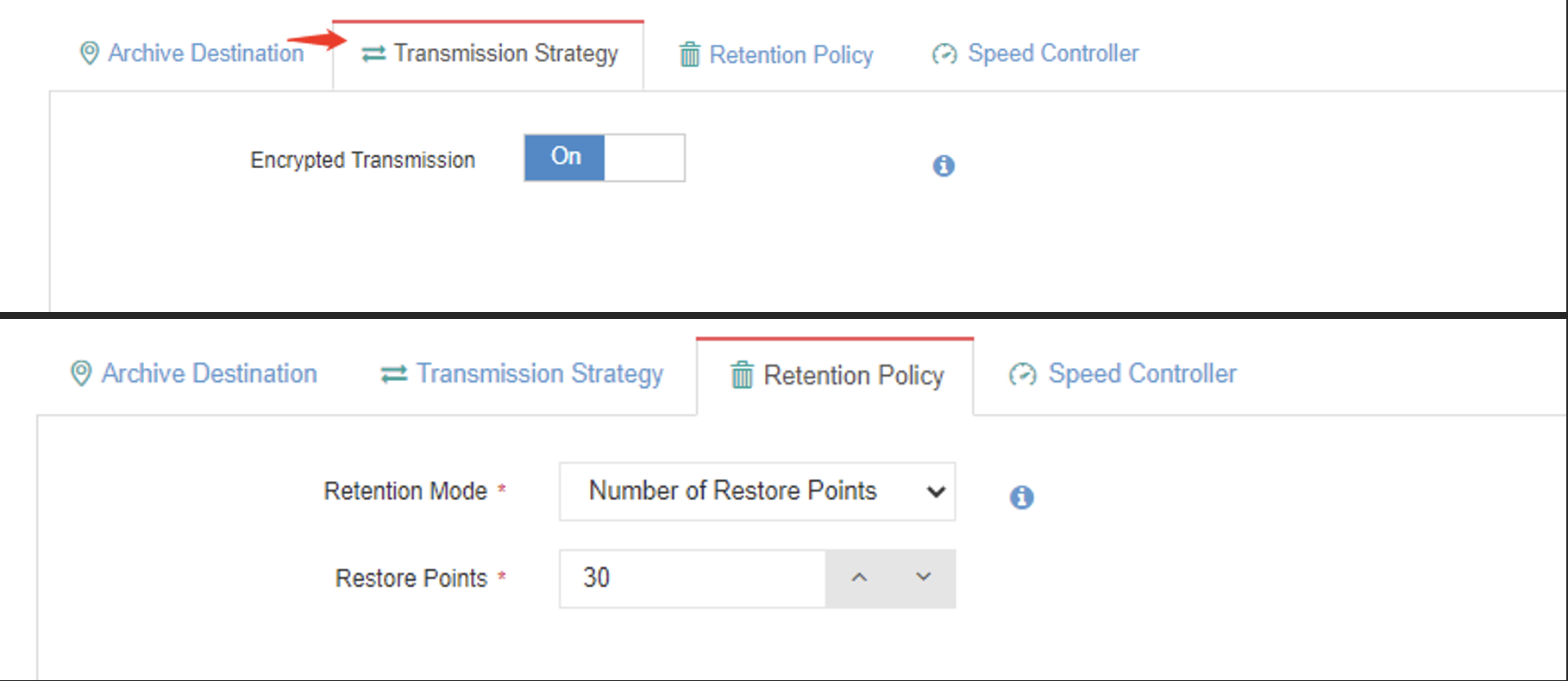
Click “Next” once the settings are configured as required.
4.6 Review and confirm the job configuration. Click “Submit”.

After the job is saved successfully, Vinchin Backup & Recovery will automatically archive data as schedule to Wasabi hot cloud storage.
5. Restore a Backup Archive
To restore backup archive data from Wasabi cloud storage, users should first create an archive restore job to restore the backup archive to an on-site storage. Then, users should create a restore job to restore the backup. The following steps describe how to restore a backup from a backup archive stored on Wasabi cloud storage.
5.1 Create an Archive Restore Job
5.1.1 Create an Archive Restore job by navigating to "Backup Archive" >> "Archive Restore". Select the Wasabi Cloud Storage and select the Restore point in the Restore Source tab. Click "Next".
Select an on-site storage to save the restored archive data in the Restore Destination tab.

5.1.2 In the Restore Strategy tab, select encrypted transmission. Optionally select the "Speed Controller" tab to set the appropriate speed controller setting. This is needed only if the archive restore job will bring network or I/O overload to your production environment.

5.1.3 Review and confirm the settings and click Submit to create the archive restore job.
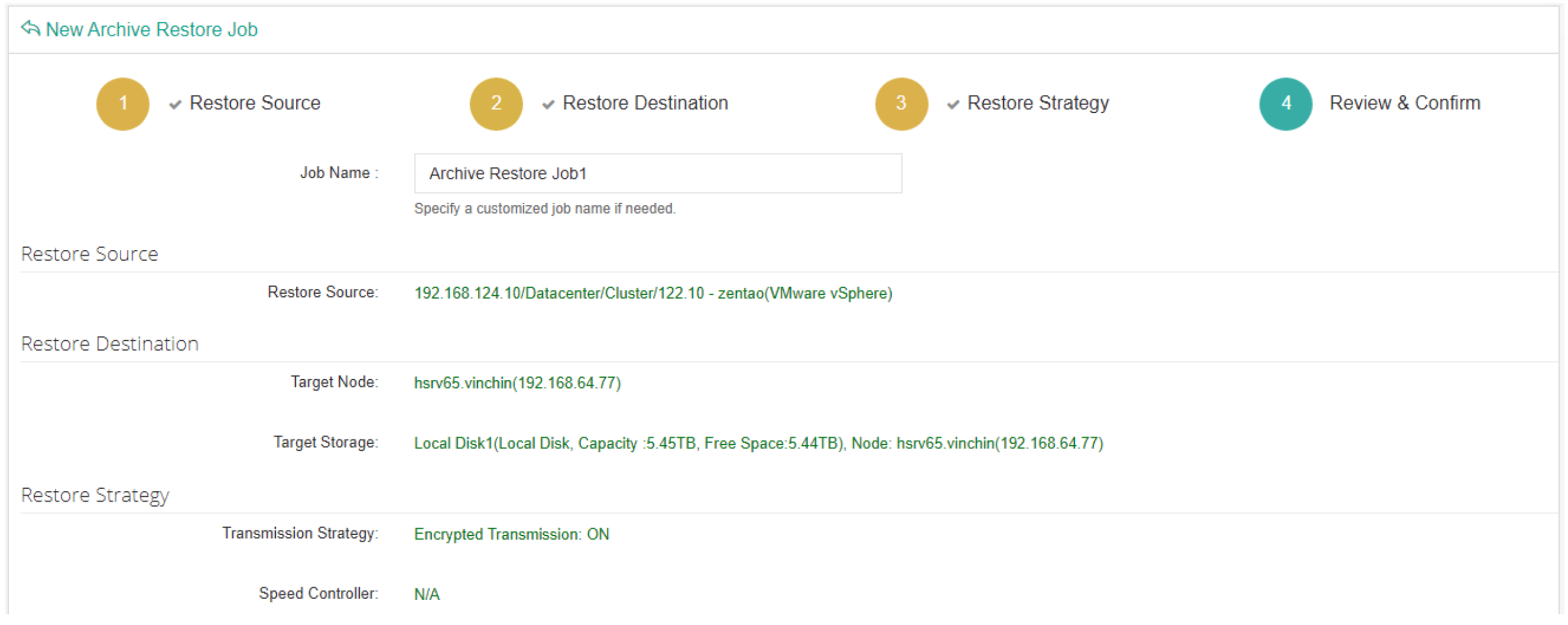
5.2 Create a Restore Job.
5.2.1 Navigate to VM Backup > Restore page and create a VM restore job.
In the Restore Point dropdown list, select the backup node (refer to the target node in 5.1.2). Select the target VM restore point which you want to restore.
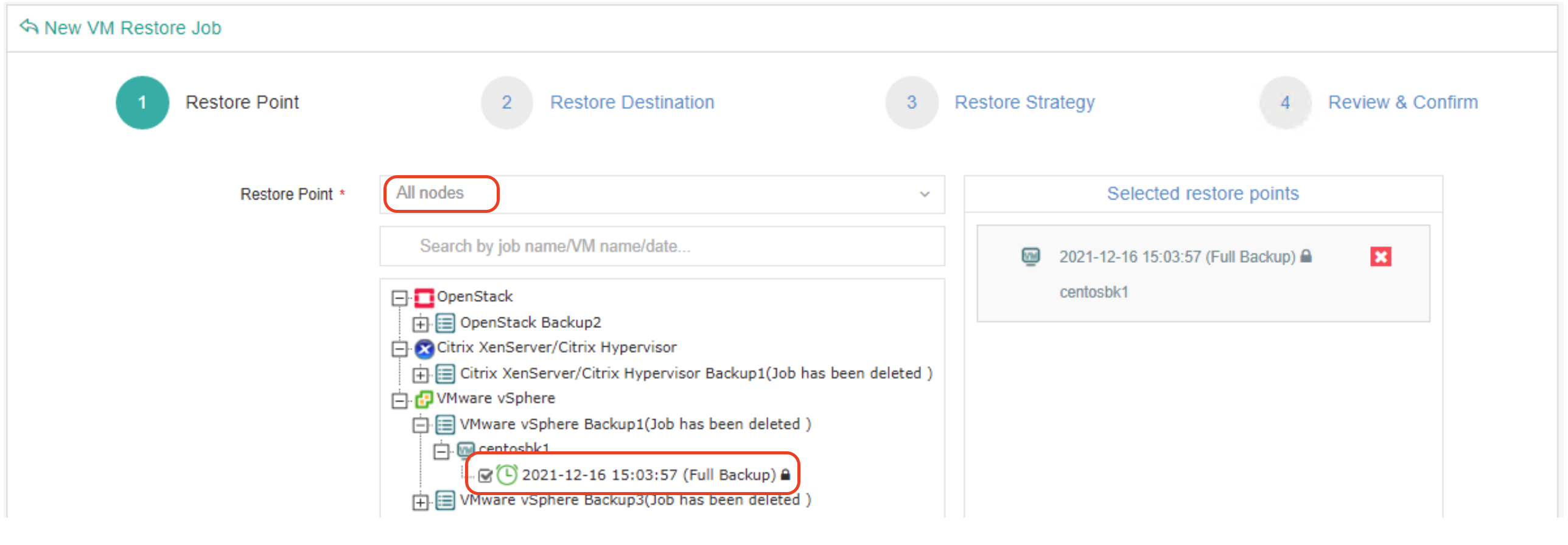
5.2.2 Select the restore destination by selecting the target host from the list where you want to run the restored VM. To restore a group of VMs, enable "Unified Configuration" function for setting the storage, and network, and choose whether to power ON the target VMs after restoring.

5.2.3 Setup the following advanced restore options in the VM Configurations window-
Name & Status- Name for the VM to be restored and its power status after restoring

CPU- Change the number of CPUs or CPU cores

RAM- Change the RAM size

Virtual Disk- Optionally you can choose to restore specific disks without having to restore all disks of the VM. You can also select specific datastore to which the virtual disk will restore to and setup disk provisioning options by clicking Advanced.

Virtual Network- Optionally you can change the default Virtual network assigned to the VM. MAC address assignment can be setup by clicking on Advanced and selecting from the dropdown list.


Other Settings- Provide the "Encryption password", if VM backup data is encrypted.

5.2.4 In the General Strategy window, configure the VM restore job as one-off or as scheduled. Optionally you can setup speed controller setting if there is a chance that the backup jobs will bring network or I/O overload to production environment.

5.2.5 Review and confirm the settings. Click "Submit" to create the restore job.

5.2.6 Once the job is created, user is directed to Monitor Center >> Jobs to monitor the created restore job. If the job is one-off it runs immediately after being created.

The job details can be viewed by clicking the job while it is running. "Run Log" contains the logs of the currently running job.